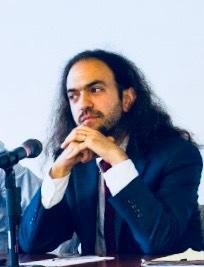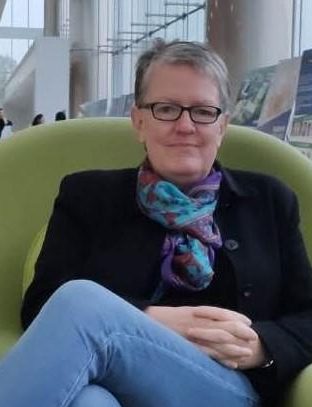Exploring an interdisciplinary teaching approach at DKU
By Yapei Chen*
Interdisciplinary teaching, broadly defined as integrating two or more disciplines, appeared in history a long time ago and is a popular teaching approach many instructors recommend. Going back to ancient Greece, Aristotle liked to promote discussion among students from multiple disciplines, like philosophy and math. The collision of thoughts allowed his students to acquire knowledge toward achieving a holistic understanding of the issue. In modern China, Zuoren Zhou, one of the most famous Chinese writers of the early 20th century, also addressed the importance of interdisciplinary teaching and learning. Literature, he (1932) argued, is like biology: both take human life as their subject, so the two are closely related, and thus it is natural for those who study literature to also study biology.
Believing in the effectiveness of the interdisciplinary teaching approach, many faculty at Duke Kunshan University (DKU) also study and creatively apply this approach to their courses.
Why DKU employs an interdisciplinary approach
Professor James Miller, Associate Dean for Interdisciplinary Strategy, introduces the benefits of the interdisciplinary teaching approach in multiple DKU academic events and conferences, aiming to maximize students’ learning. During the events, he shared his personal story of interdisciplinarity in the evolution of his scholarship and teaching that fit the liberal art education at DKU. One well-established definition of interdisciplinary teaching by Jacob (1989) addressed interdisciplinary as “a knowledge view and curriculum approach that consciously applies methodology and language from more than one discipline to examine a central theme, issue, problem, topic, or experience” (Clair and Hough, 1992: 4).
Meanwhile, Professor Miller also addressed the uniqueness of the interdisciplinary teaching approach at DKU, which aimed to foster critical thinking regarding interdisciplinarity in the first place when faculty design courses. Therefore, besides the Common Core, DKU builds interdisciplinarity into all of its majors, typically organized around a thematic field, within which there are various disciplinary options. The interdisciplinary teaching approach offers enormous benefits to students. In an internal strategy document, Prof. Miller wrote:
“No graduate from DKU will be ‘just’ a biologist. They will be a biologist and more, a biologist who can communicate with, collaborate with, learn from, apply theories from, and use methods from other disciplines.”
BIOL 203: An example

Biology Professor Katherine Robertson and literature Professor Yitzhak Lewis joined forces to teach an interdisciplinary course, BIOL 203 Molecular, Behavioral and Social Evolution: Evolution of Genomes, Traits, Behaviors, and Societies, which was well-received by students.

BIOL 203 examines Darwin’s theories of natural selection and evolution through multiple lenses in both science and humanities. As Professor Robertson emphasized in an interview, it is very interesting to see how the biological theory also impacts the social science area, for example how Darwin’s theory of evolution influenced sociologists and led to the development of Social Darwinism. Exploring contemporary ideas of evolution in the context of complex social behaviors and societies, Professor Lewis also shared this common interest with Professor Robertson, and they planned this interdisciplinary course together. They emphasize the importance of cross-disciplinarity that allows the collision of ideas between students and instructors.
What students learn from interdisciplinary teaching
Professors Robertson and Lewis set insightful objectives for students to promote comprehensive growth in the academy. During the interview, Professor Robertson mentioned the significance of building students’ critical thinking ability to analyze one theory from different perspectives. For example, “Darwinism” was a highly controversial theory that was once questioned by scholars from both the science and social science communities. In the previous non-interdisciplinary courses, students might be exposed to this dispute from only one angle, which might miss the holistic point of view. Professor Lewis also emphasized the importance of what he termed perspective and modeling in interdisciplinary teaching. By perspective, he means the way that professors can teach the same subject matter from different angles brought by the viewpoints of co-teaching with faculty from different disciplines.
Students also can learn from the diversity of perspectives of other classmates who might be from very different academic disciplines. In terms of modeling, Professor Lewis emphasized how the professors can provide a model for students to engage in interdisciplinary learning from the way they structure the class and lead discussions in the classroom.
During their co-teaching, the two professors shared their disciplinary angles in front of the classroom, so that students might see the disputes on specific topics.
As Professor Robertson mentioned, their discussion can inspire students to see the diversity of knowledge across subjects and realize the overlap between various fields.
The class format
To ensure the success of this course, the two professors made many creative adjustments:
- The class size was small, with only six students, making the in-depth engagement possible.
- The class format was hybrid due to the impact of Covid-19 last year. Professor Robertson was the main host in the classroom, and Professor Lewis attended class discussion through the Zoom meetings with four other students who could not return to DKU.
- The class was highly discussion-based, which encouraged everyone to share their opinions in the classroom, in which everyone participated and contributed to the class.
A unique opportunity to exchange viewpoints
Besides the discussion among students, the collision of thoughts and viewpoints also happened between the two professors, who would argue one theory from the perspectives of biology and social science in front of students. The discussion between the professors offered students valuable opportunities to appreciate the diversity of perspectives between disciplines and to learn from this interdisciplinary setting. As mentioned above, this course was a discussion-based course in which the professors designed multiple approaches to ensure the active engagement of students. Before the class started, the instructors would post the discussion outline on the Sakai course site to let students get familiar with the core questions that the current course meeting would focus on, allowing students to keep an eye on the key points. During class time, the professors also generated case questions related to readings instead of abrupt lectures. During the discussion, students would discuss first, and then the professors would jump in to share their opinions.
Challenges faced
Both instructors mentioned the challenges they faced during the interdisciplinary course, primarily the shortage of knowledge base and issues on perspectives/modeling. Professor Robertson believes that the crossover between divisions of science and humanities brings some difficulties to students since the material was so diverse. For instance, students from biology majors might get ahead in the first part of the session since they already had enough knowledge to quickly receive information related to biology. Meanwhile, students from the humanities division took more time to process the biology readings. Professor Lewis also shared his concerns about interdisciplinary courses, which are the issues of perspective and modeling, and raised two questions: Do students have the willingness to learn and discover the new perspectives from interdisciplinary co-teaching, which raises a challenge for faculty to ensure students’ engagement? How do you form the modeling component well between faculty from multiple divisions?
Based on the potential challenges they mentioned, the two professors also gave their opinions on how to solve these problems. Professor Robertson addressed the importance of ensuring every student has the same level of background knowledge in classes, and that instructors always need to provide assistance to students who are not familiar with the field. Professor Lewis mentioned that instructors in interdisciplinary courses should design thoughtful and productive assignments for co-teaching, bring perspectives from different divisions together in assignments, and encourage students to integrate multiple perspectives into one research project.
Assessment
The primary way of assessing students was based on their writing assignments and the final individual project presentation. Although the discussion was not always graded in this class, it still played a significant role as two professors considered it one major way to promote students’ participation. Therefore, besides the writing assignments, the instructors also evaluated students’ performance in class involvement, including class participation and online discussions via Perusall. In Perusall, teachers can create assignments based on the readings, and students can see each other’s notes. In summary, the assessment in this course was targeted to increase students’ comprehensive academic ability including both writing and discussion skills.
This interdisciplinary course brings many insightful benefits to DKU students, as revealed in the course evaluation. Students thought highly of the unique interdisciplinary setting, in which the co-teaching instructors found the balance between science and humanities, and inspired students to learn across subjects.
This post was proofread by Professors Katherine Robertson, Yitzhak Lewis, and James Miller.
References:
St Clair, B., & Hough, D. L. (1992). Interdisciplinary Teaching: A Review of the Literature. St. Clair, B., & Hough, D. L. (1992). Interdisciplinary teaching: a review of the literature. Retrieved from https://eric.ed.gov/?id=ED373056
Zhou, Z-R. (1932). The origin of New Chinese literature. Jiangsu Literature Press.
*About the author:
Yapei Chen, currently a first-year M.A. student at Teachers College, Columbia University, is majoring in Education Policy & Social Analysis. Yapei is an intern for the Center for Teaching and Learning (CTL) at DKU. He graduated from Franklin and Marshall College, majoring in sociology. With his academic background in Liberal Arts College, Yapei is able to help Center for Teaching and Learning, at DKU with teaching and learning facilitation.

